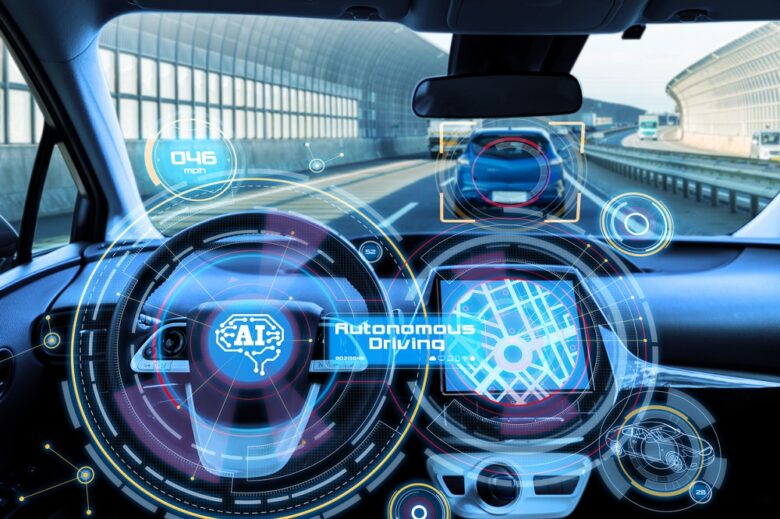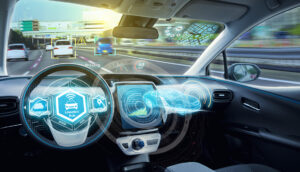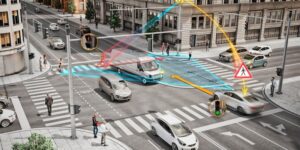Self-driving cars are no longer just a science fiction concept. They’re here, and they’re changing the way people and things move. Artificial intelligence (AI) is the only technology that can make self-driving cars safer, smoother, and more convenient than any other technology. AI continues to drive this change, enabling cars to see and understand their surroundings, make informed decisions, and drive safely on roads around the world.
We’ll learn how AI is making self-driving cars possible, what technologies are making this shift possible, what challenges people face when using self-driving cars, and what this trend means for society as a whole. Ultimately, you’ll better understand how AI and self-driving cars will change the way people move in the future.
The Dawn of Self-Driving Cars: A New Era in Transportation
The concept of self-driving cars has ushered in a new era of transportation that could change the way people move. Self-driving cars were once considered a distant, unattainable future. But thanks to advances in artificial intelligence, sensors, and communications, this dream is now a reality. Companies like Tesla, Waymo, and GM Cruise, as well as governments, are investing heavily in self-driving car projects, accelerating the development and adoption of these vehicles.
Major advances in neural networks and machine learning have made it possible for cars to drive in real time, just as humans do (or even better). This opens up a world of possibilities for applications beyond just moving people, such as logistics, agriculture, and public transportation. But the real benefit of autonomous driving is that AI can reduce human errors and make roads safer and more efficient.
AI’s Role: Perception, Decision-Making, and Control
At the heart of self-driving cars is a collection of AI capabilities that govern vision, decision-making, and control. Perception refers to a vehicle’s ability to comprehend its environment. Artificial intelligence (AI) enables cars to “sense” their surroundings using cameras, LiDAR, radar, and ultrasonic sensors to detect other vehicles, pedestrians, obstacles, and even changes in the road.
AI is best at decision-making. Algorithms and neural networks analyse data from sensors to determine what the car should do. Should the car change lanes, slow down, or stop altogether? No human could process so much real-time data.
In the end, AI assumes control. It translates those choices into actions, such as steering, accelerating, and stopping, while ensuring that everything happens smoothly and in sync. These AI-driven systems work together to make self-driving cars accurate, reliable, and useful.
Key AI Technologies Driving Self-Driving Car Development:
The success of self-driving cars depends on key new technologies in AI. Machine learning (ML) enables cars to learn from past experiences and improve over time with little to no help from humans. AI-driven training models run hundreds of scenarios to ensure that the car can handle anything that might happen in the real world.
Deep learning is a form of machine learning (ML) that uses neural networks to process large amounts of data. It is essential for image recognition and traffic prediction. Reinforcement learning is another key component. It enables AI systems to make smarter decisions by rewarding beneficial results, similar to how humans learn.
In addition, the combination of AI and cloud computing can store and analyse the large amounts of data generated by self-driving systems. Combined with edge computing, it can improve data security, reduce latency, and help humans make decisions closer to the car.
Challenges and Opportunities for AI-driven independence:
The development of AI-powered self-driving cars is currently underway, despite the remaining challenges. Deep learning models require a lot of data and training to work effectively, which can take years. It remains a major challenge to make vehicles function well in different locations, under different weather conditions, and in urban and rural dynamics.
But car manufacturers face several regulations that put them in a difficult position. Developing a uniform set of rules for testing and operating self-driving cars is a difficult problem internationally. But the opportunities are enormous. The use of self-driving cars will create jobs in the development of artificial intelligence, accelerate shared mobility, and reduce our dependence on human drivers, which will save a lot of logistics costs in the long run.
The Ethical and Social Impact of Artificial Intelligence in Self-Driving Cars:
As we enter the era of self-driving cars, we cannot help but think about ethical and social issues. How should programmers program self-driving cars to choose between hitting pedestrians or other vehicles to avoid casualties? These ethical questions place a significant ethical responsibility on designers and manufacturers.
Self-driving technology also impacts society. Self-driving technology can make travel easier for people with disabilities, but it can also lead to millions of professional drivers (including truck drivers and taxi drivers) losing their jobs, which will have a significant impact on the global economy. Only by finding a balance between innovative ideas and caring for others can society fully accept self-driving cars.
The Future of Autonomous Vehicles: AI’s Continuing Influence:
Artificial intelligence will continue to be the main driving force behind the promising future of self-driving cars. Experts say that fully automated public transport systems will take over cities in the next decade, meaning that car ownership will decline. Experts anticipate the rise of drone delivery services, which will accelerate logistics and enhance environmental friendliness.
Advances in AI, such as more powerful predictive algorithms, 5G connectivity, and collaborative learning between fleets of autonomous vehicles, will make safety measures more advanced and easier to integrate into transport systems. In 30 years, AI cars could revolutionise transport as much as the cars themselves.
How AI Can Change the Road of the Future:
The autonomous vehicle revolution is a prime example of how modern technology and innovative thinking can work together. It is changing the way we think about transport. AI is changing the way we travel and get around, while also giving us the opportunity to create safer, more efficient, and more accessible solutions.
While there are many questions about the development, application, and ethics of AI, there is no doubt that it holds great promise for the sector. Autonomous vehicles are a prime example of the growing importance of AI in connected systems and the limitless potential this technology can achieve.
The driverless future is fast approaching. Are you ready to learn more about the next steps in this fantastic revolution?
FAQs:
1. How does AI work in self-driving cars?
Artificial intelligence uses data from sensors to help cars understand their surroundings, make decisions, and perform driving tasks such as steering and braking.
2. Are self-driving cars safe?
Yes, studies show that self-driving cars can reduce the number of accidents caused by human error. Human error accounts for 94% of all traffic accidents. However, self-driving cars require very strict testing and regulations.
3. When will self-driving cars be on the road?
Semi-autonomous cars are already on the road, but fully autonomous driving (level 5) could take another 10 to 15 years to become popular and widely accepted.
4. Which sectors will be most affected by self-driving cars?
Logistics, ride-sharing, public transportation, and agriculture are just some of the sectors that will be most affected by the use of self-driving cars.
5. What are some ways to address ethical issues around self-driving AI?
Experts say AI decisions need to be open and fair, and ethical frameworks need to be established, involving different groups, such as legislators and ethicists.




